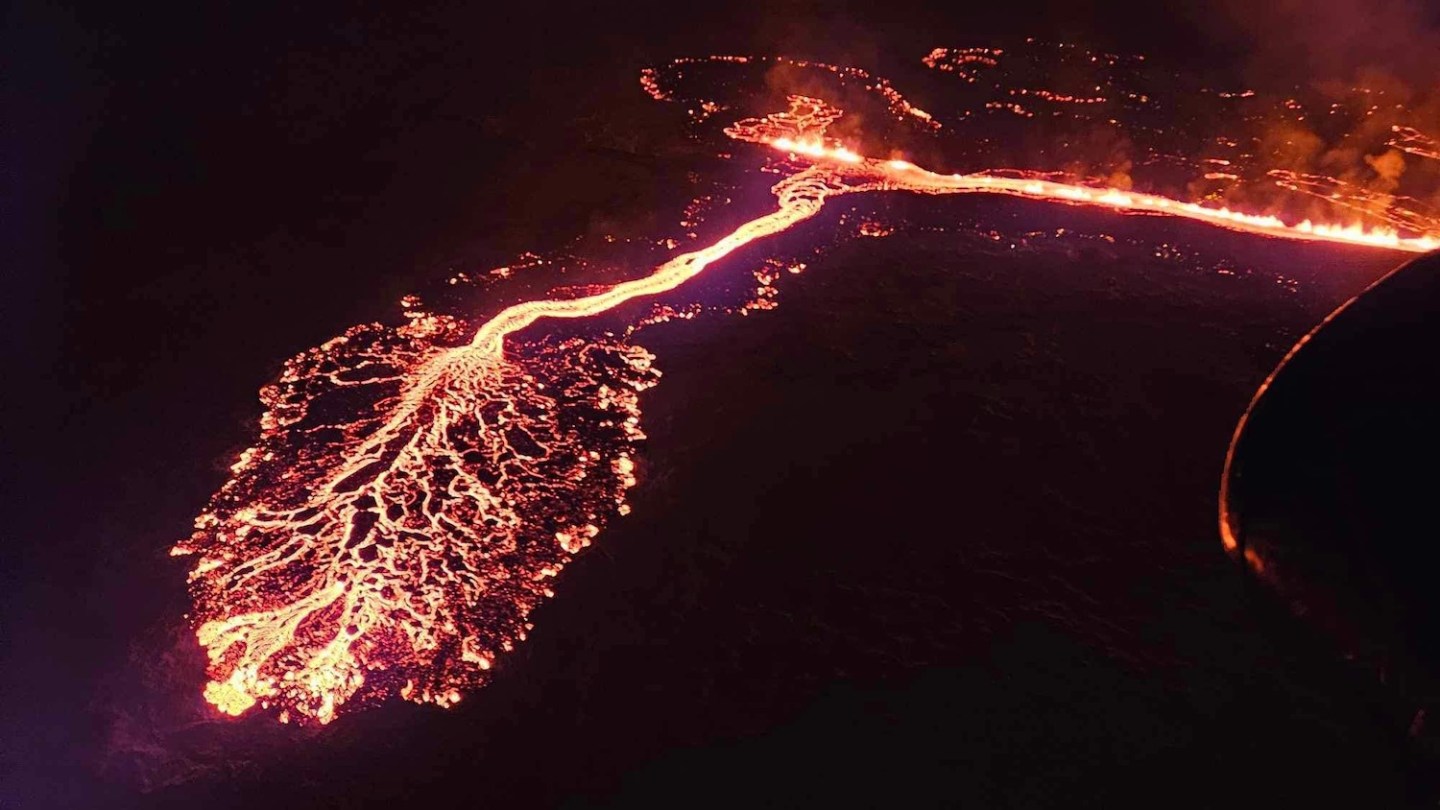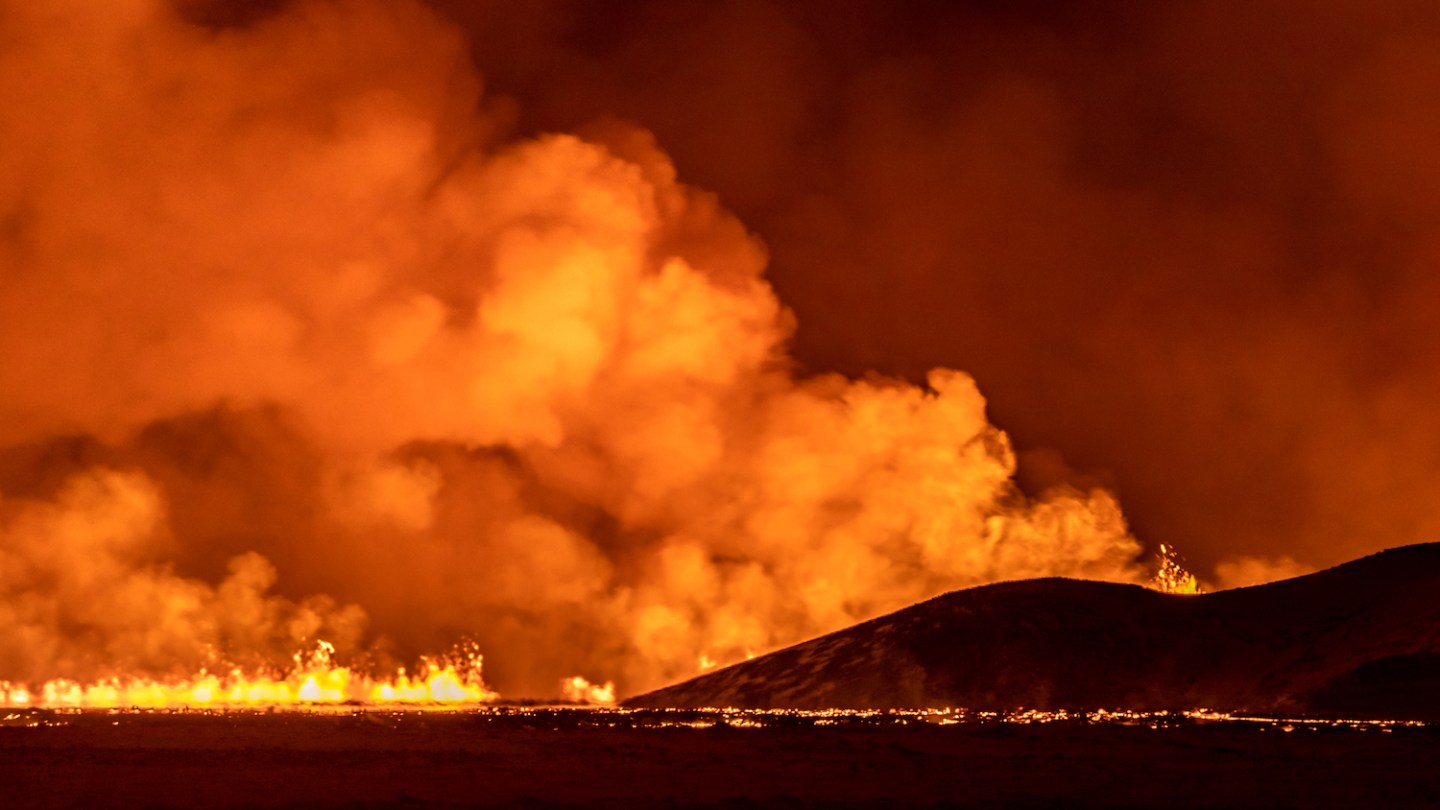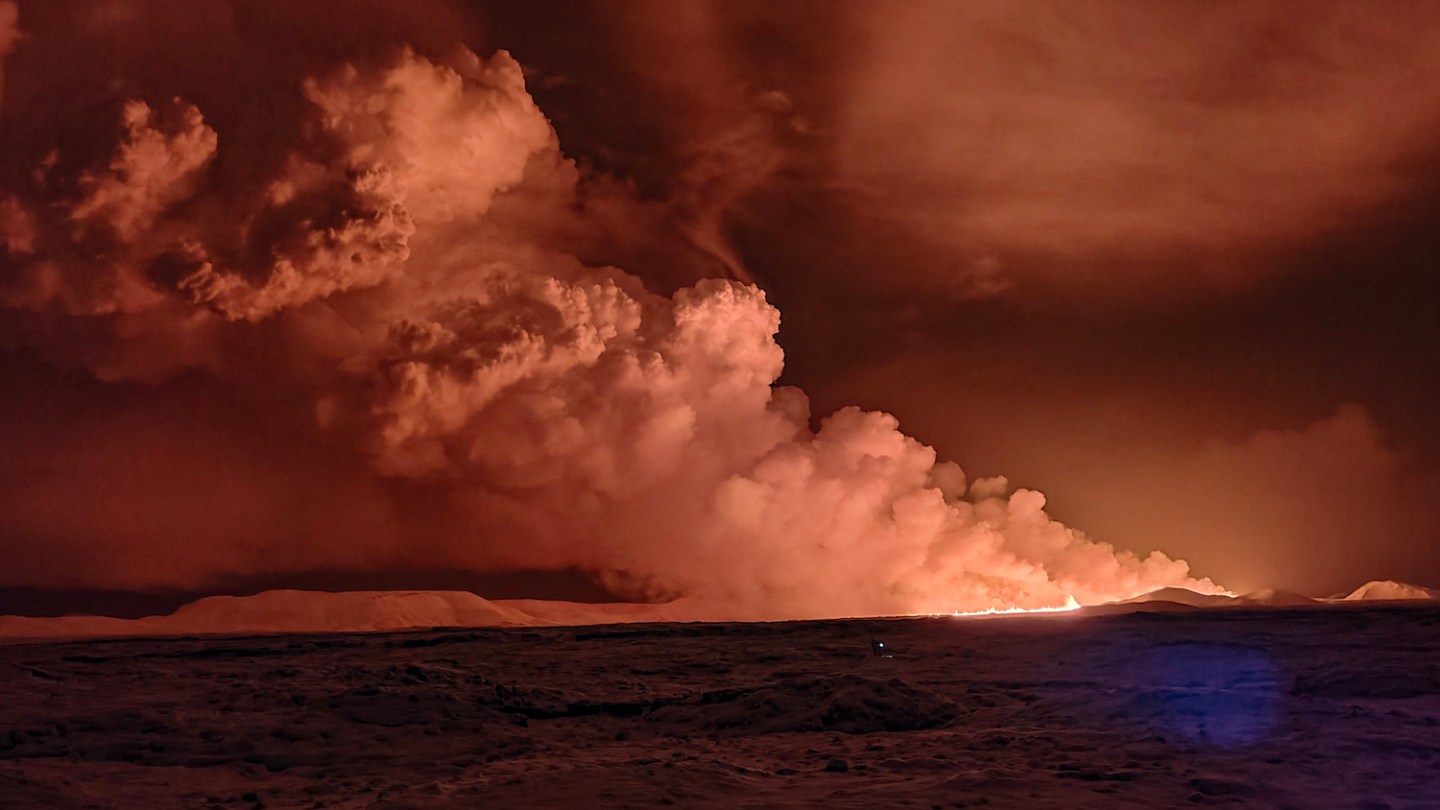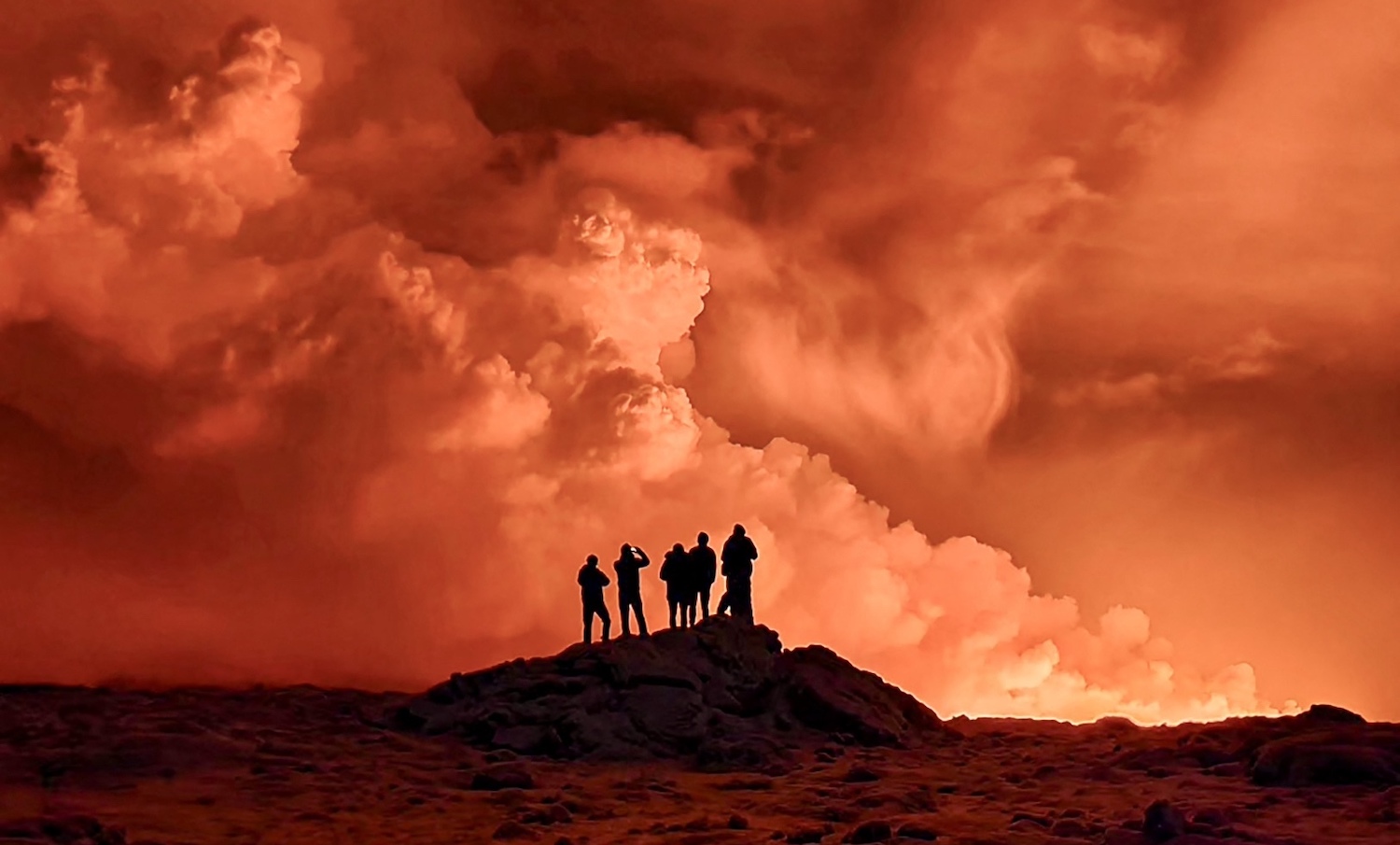One month after the surface of the Earth was burped open by the cyclical unzipping of Iceland, the eruption is here.
Here's some incredible footage shot from an Icelandic coast guard helicopter.
A four-kilometer fissure snaked open late Monday night on the Reykjanes Peninsula near the evacuated town of Grindavik, and, critically, the large Svartsengi geothermal power plant. Reykjanes is the mostly densely populated region of the island, and though volcanologists initially determined the eruption was slightly larger and closer to critical infrastructure than predicted, they've since announced that the eruption has stabilized. "The fact that the activity is already reducing is not an indication of how long the eruption will last, but rather that the eruption is reaching equilibrium. This trend has been seen at the beginning of all the eruptions on the Reykjanes Peninsula in recent years," the Icelandic Met Office said in a statement.

As that statement confirms, this sort of eruption is a known quantity. Though seismic activity slowed down three weeks ago to the point that officials revised their predictions and said an eruption appeared less likely, the regularity of small earthquakes, the pre-formed crack system, and the fundamental nature of Iceland's basaltic volcanism (the general rule is that more mafic magmas produce less violent eruptions, whereas their felsic counterparts have sufficient gas content to really pop off) make these kinds of eruptions extremely predictable.

The eruption will continue for at least a few days, though the omni-fissure may already be contracting, with the lava now spouting out of five individual vents. "The lava flow is estimated to be about one-quarter of what it was at the beginning of the eruption on 18 December, and a third of the original fissure is active," IMO representatives said in a statement. Officials have warned tourists not to go hang out by the river of lava, with one saying this was "no tourist volcano," which demands the question: What does a tourist volcano look like? The lava flow itself reportedly poses little danger, though volcanic gases could hit Reykjavík on Tuesday.







